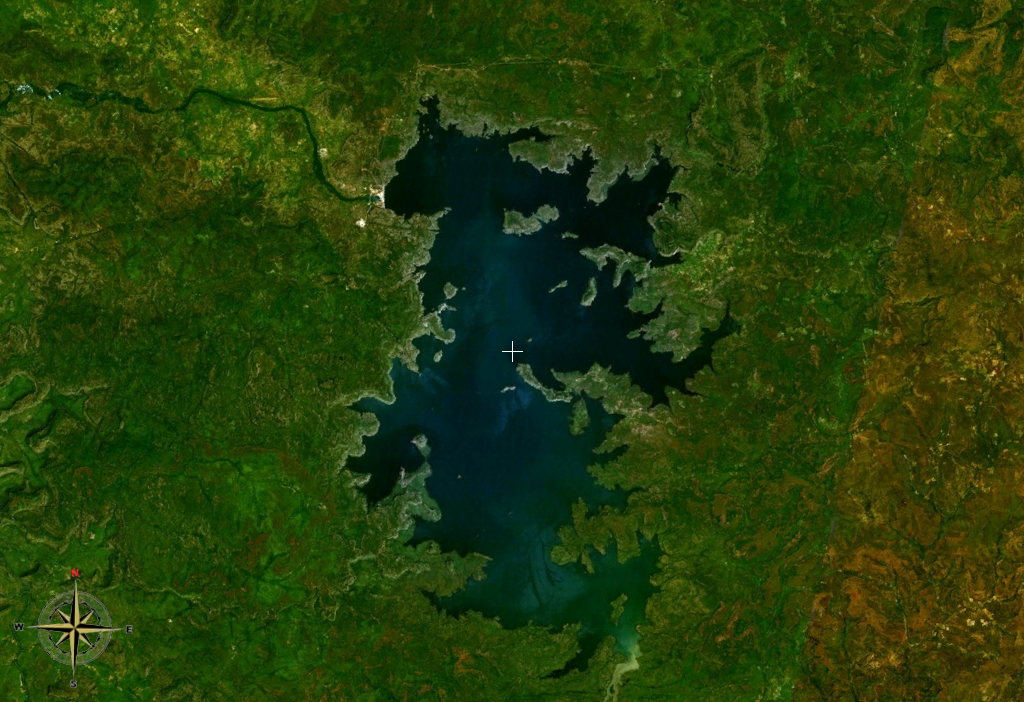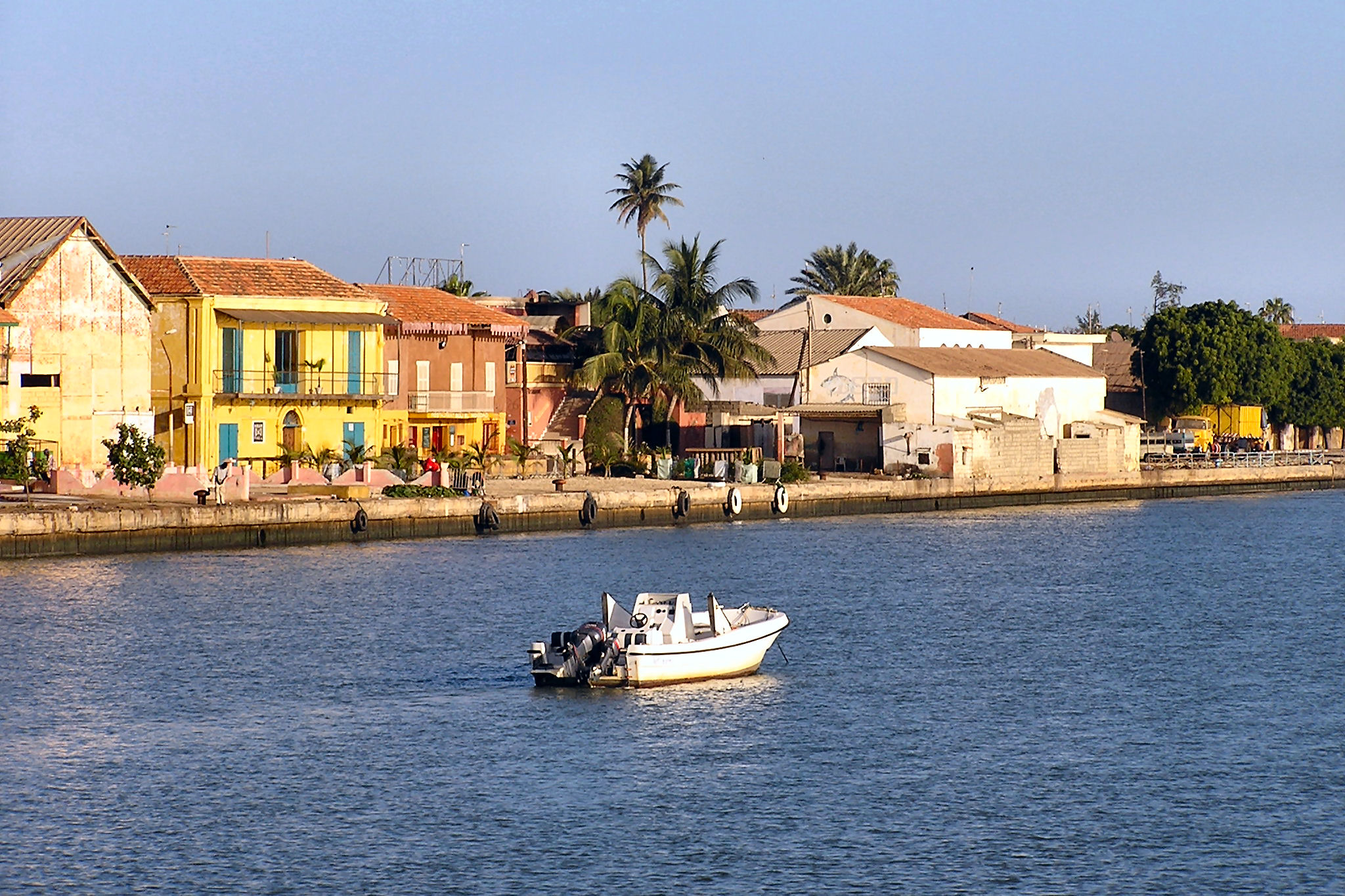|
Manantali Dam
The Manantali Dam is a multi-purpose dam on the Bafing river in the Senegal River basin, to the south-east of Bafoulabé, in Mali's Kayes Region. History Early planning for the dam began in 1972 when the Organization for the Development of the Senegal River (Organisation pour la mise en valeur du fleuve Sénégal, or OMVS) was set up by Mali, Mauritania and Senegal to develop the agricultural and hydropower potential of the basin. The World Bank declined to fund the dam in 1979, considering it an unreasonable investment. However, financing was secured mainly from Europe and construction on the dam began in 1982. It was completed in 1988, but without the hydropower plant. In 1989 the Mauritania–Senegal Border War stopped all work on the project. A Swiss journalist who visited Manantali in 1988 described the project as a "luxury car without a motor". In 1993 Carl–Dieter Spranger, then Germany's minister for development assistance, called Manantali an "act of economic and enviro ... [...More Info...] [...Related Items...] OR: [Wikipedia] [Google] [Baidu] |
Bafing River
The Bafing River ( Manding for "black river") is the upper course and largest tributary of the Senegal River which runs through Guinea and Mali and is about long. Course The Fonta Djallon in Guinea is the source of the Bafing River, north of Mamou. It flows for about and converges with the Bakoy River to join the Senegal River in western Africa.. The Bafing River is the largest tributary of the Senegal River, and contributes almost half of its total water volume. The Bafing forms part of the international border between Guinea and Mali. Irrigation Flooding from the Bafing River along the Senegal River had been traditionally relied on as a means of supporting local agriculture. However, a drought in the 1970s necessitated the construction of dams on both the Bafing River and the Senegal River. The Manantali hydroelectric dam, completed in 1987, is located on the Bafing River upstream of Bafoulabé. It forms the largest artificial lake in Mali, Lake Manantali. The dam retain ... [...More Info...] [...Related Items...] OR: [Wikipedia] [Google] [Baidu] |
West African Development Bank
The West African Development Bank - WADB (fr. Banque Ouest Africaine de Développement - BOAD / pt. Banco de Desenvolvimento do Oeste Africano - BDOA) is an international Multilateral Development Bank established in 1973 to serve the nations of Francophone and Lusophone West Africa. The BOAD is organised by the Central Bank of West African States and its eight member governments: Benin, Burkina Faso, Guinea Bissau, Côte d'Ivoire, Mali, Niger, Senegal and Togo. It is funded by member states, foreign governments and international agencies. Its headquarters are in Lomé, Togo. Creation The BOAD was created 14 November 1973 by member states of the West African Monetary Union (WAMU). The original charter focused on development of member economies towards balanced development and to prepare economies for future West African economic integration. In 1994, it became the development arm of the West African Economic and Monetary Union (WAEMU/UEMOA). Structure Since that time several ... [...More Info...] [...Related Items...] OR: [Wikipedia] [Google] [Baidu] |
Embankment Dams
Embankment may refer to: Geology and geography * A levee, an artificial bank raised above the immediately surrounding land to redirect or prevent flooding by a river, lake or sea * Embankment (earthworks), a raised bank to carry a road, railway, or canal across a low-lying or wet area * Embankment dam, a dam made of mounded earth and rock * Land reclamation along river banks, usually marked by roads and walkways running along it, parallel to the river, as in: ** The Thames Embankment along the north side of the Thames River in London, England *** The Victoria Embankment contained within the Thames Embankments *** The Chelsea Embankment contained within the Thames Embankment ** The Albert Embankment along the south side of the Thames River in London, England ** The Neva embankments along the Neva River in Saint Petersburg, Russia * Embankment tube station, a station on the London Underground Arts * "Embankment", a work by artist Rachel Whiteread Dame Rachel Whiteread ( ... [...More Info...] [...Related Items...] OR: [Wikipedia] [Google] [Baidu] |
Dams In Mali
A dam is a barrier that stops or restricts the flow of surface water or underground streams. Reservoirs created by dams not only suppress floods but also provide water for activities such as irrigation, human consumption, industrial use, aquaculture, and navigability. Hydropower is often used in conjunction with dams to generate electricity. A dam can also be used to collect or store water which can be evenly distributed between locations. Dams generally serve the primary purpose of retaining water, while other structures such as floodgates or levees (also known as dikes) are used to manage or prevent water flow into specific land regions. The earliest known dam is the Jawa Dam in Jordan, dating to 3,000 BC. The word ''dam'' can be traced back to Middle English, and before that, from Middle Dutch, as seen in the names of many old cities, such as Amsterdam and Rotterdam. History Ancient dams Early dam building took place in Mesopotamia and the Middle East. Dams were used ... [...More Info...] [...Related Items...] OR: [Wikipedia] [Google] [Baidu] |
Dams Completed In 1988
A dam is a barrier that stops or restricts the flow of surface water or underground streams. Reservoirs created by dams not only suppress floods but also provide water for activities such as irrigation, human consumption, industrial use, aquaculture, and navigability. Hydropower is often used in conjunction with dams to generate electricity. A dam can also be used to collect or store water which can be evenly distributed between locations. Dams generally serve the primary purpose of retaining water, while other structures such as floodgates or levees (also known as dikes) are used to manage or prevent water flow into specific land regions. The earliest known dam is the Jawa Dam in Jordan, dating to 3,000 BC. The word ''dam'' can be traced back to Middle English, and before that, from Middle Dutch, as seen in the names of many old cities, such as Amsterdam and Rotterdam. History Ancient dams Early dam building took place in Mesopotamia and the Middle East. Dams were used ... [...More Info...] [...Related Items...] OR: [Wikipedia] [Google] [Baidu] |
Félou Hydroelectric Plant
The Félou Hydroelectric Plant is a hydroelectric installation at the Félou Falls on the Sénégal River in Mali. It has three water turbines capable of generating 62.3 MW. The current power station replaced an older one built in the 1920s. Construction of the new power station began in October 2009 and was financed by the World Bank. It is the third Senegal River Basin Development Authority project on the river and was completed in 2014. The existing weir was refurbished with the previous height maintained. In 1927, the previous hydroelectric power station was commissioned. It was refurbished in 1992 and had an installed capacity of 600 kW. At maximum output the three 21 MW turbines pass a total of of water. Between August and November the water flowing in the river generally exceeds this value allowing the plant to operate at full capacity and the excess water to pass over the weir. During the dry season (December to July) the electricity generated is reduced to ab ... [...More Info...] [...Related Items...] OR: [Wikipedia] [Google] [Baidu] |
Gouina Hydroelectric Plant
The Gouina Hydroelectric Plant is a run-of-the-river-type hydroelectric installation currently being constructed on Gouina Falls along the Senegal River in Mali. It is located about southeast of Diamou in the Kayes Region. It is the fourth project of the Senegal River Basin Development Authority and its ground-breaking ceremony on 17 December 2013 was attended by the heads of state of each member country. Mauritanian President Mohamed Ould Abdel Aziz laid the foundation stone. Preliminary construction had been suspended due to the 2012 Malian coup d'état and subsequent Northern Mali conflict. The plant is expected to be complete in 2020 and will provide power to Mauritania, Mali and Senegal. The plant will cost US$329 million and the of transmission lines will cost US$65 million. The project is receiving 85 percent of its funding from the Exim Bank of China along with US$1 million from the EU-Africa Infrastructure Trust Fund and US$1.4 million from the International Development ... [...More Info...] [...Related Items...] OR: [Wikipedia] [Google] [Baidu] |
International Rivers
International Rivers is a non-profit, non-governmental, environmental, and human rights organization. Founded in 1985 by social and environmental activists, International Rivers works with policy and financial analysts, scientists, journalists, development specialists, and volunteers to combat the adverse effects of dams and their legacies in over 60 countries. The organization has staff in South Africa, Thailand, Brazil, China, India, and the United States, who have expertise in a range of issues and who use research, education, and advocacy to achieve the organization's mission. Overview The organization's stated aims are to protect rivers and defend the rights of communities that depend on them. It actively works against the development model with which dams are associated, which it believes to be unsustainable, and promotes alternative solutions for meeting water, energy, and flood-management needs. International Rivers is dedicated to giving dam-affected people the tools t ... [...More Info...] [...Related Items...] OR: [Wikipedia] [Google] [Baidu] |
Bilharzia
Schistosomiasis, also known as snail fever, bilharzia, and Katayama fever, is a disease caused by parasitic flatworms called schistosomes. The urinary tract or the intestines may be infected. Symptoms include abdominal pain, diarrhea, bloody stool, or blood in the urine. Those who have been infected for a long time may experience liver damage, kidney failure, infertility, or bladder cancer. In children, it may cause poor growth and learning difficulty. The disease is spread by contact with fresh water contaminated with the parasites. These parasites are released from infected freshwater snails. The disease is especially common among children in developing countries, as they are more likely to play in contaminated water. Other high-risk groups include farmers, fishermen, and people using unclean water during daily living. It belongs to the group of helminth infections. Diagnosis is by finding eggs of the parasite in a person's urine or stool. It can also be confirmed by ... [...More Info...] [...Related Items...] OR: [Wikipedia] [Google] [Baidu] |
Saint-Louis, Senegal
Saint Louis or Saint-Louis ( wo, Ndar), is the capital of Senegal's Saint-Louis Region. Located in the northwest of Senegal, near the mouth of the Senegal River, and 320 km north of Senegal's capital city Dakar, it has a population officially estimated at 258,592 in 2021. Saint-Louis was the capital of the French colony of Senegal from 1673 until 1902 and French West Africa from 1895 until 1902, when the capital was moved to Dakar. From 1920 to 1957, it also served as the capital of the neighboring colony of Mauritania. The town was an important economic center during French West Africa, but it is less important now. However it still has important industries, including tourism, a commercial center, a center of sugar production, and fishing. The Tourism industry is in part due to the city being listed as a UNESCO World Heritage Site in 2000. However, the city is also Climate change vulnerability, vulnerable to climate change—where sea level rise is expected to threaten the ci ... [...More Info...] [...Related Items...] OR: [Wikipedia] [Google] [Baidu] |



